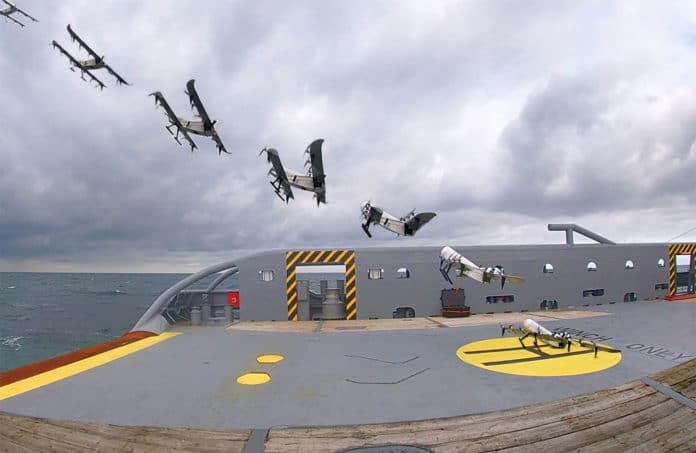Drone with electric motors are very common, but the larger ones that can land and take off vertically often also need fossil fuel. Vertical take-off and landing take so much energy that it immediately drains the battery.
Now, researchers at TU Delft, together with the Royal Netherlands Navy and the Netherlands Coastguard, have developed a drone that flies using ‘green’ hydrogen. The drone, therefore, can remain in the air for hours, much like regular aircraft, and can take-off and land vertically.
The hydrogen drone weighs 13 kg, has a wingspan of 3 meters, and is powered by 12 motors, so even if several motors fail, it can still land safely on the afterdeck of a ship or on the roof of an apartment building. It is equipped with a 300-bar, 6.8-liter carbon composite hydrogen cylinder. The cylinder feeds hydrogen at low pressure to the 800w fuel cell that converts it to electricity. The only emissions are oxygen and water vapor. In addition to the fuel cell that supplies electricity to the motors, there is also a set of batteries that, together with the fuel cell, provide extra power to the motors during the vertical take-off and landing.
Thanks to the combination of hydrogen and batteries as its power source, the drone can fly sustainably for long distances over land and water, can land almost anywhere, and will be able to serve a wide range of applications. It also brings maritime applications within reach and represents a new step in making aviation more sustainable.
The knowledge acquired while designing the drone can be used to make aviation greener. “One of the most important aspects of this research project is the hydrogen-powered flight. Worldwide, hydrogen is seen as one of the most important contenders for achieving green and sustainable aviation fuel,” said Henri Werij, Dean of the Faculty of Aerospace Engineering at TU Delft.
The TU Delft hydrogen drone has been tested successfully on Royal Netherlands Navy and Netherlands Coastguard vessels, sailing on the open sea off the Dutch coast. The TU Delft drone was able to stay airborne in a stable flight for over 3.5 hours. These properties make the drone suitable for providing support in reconnaissance and inspection tasks.
